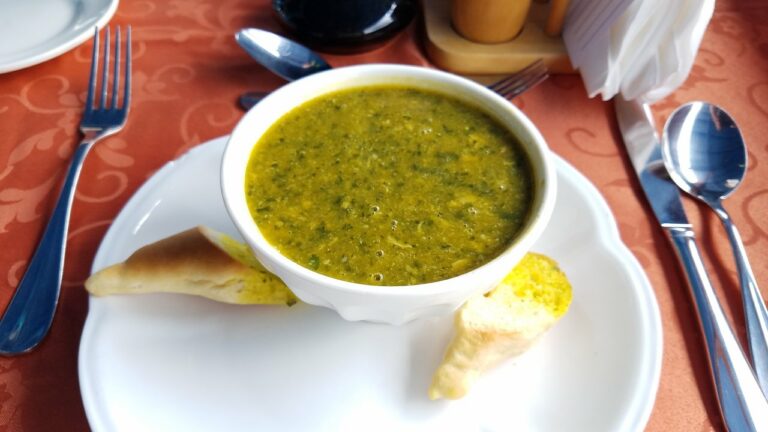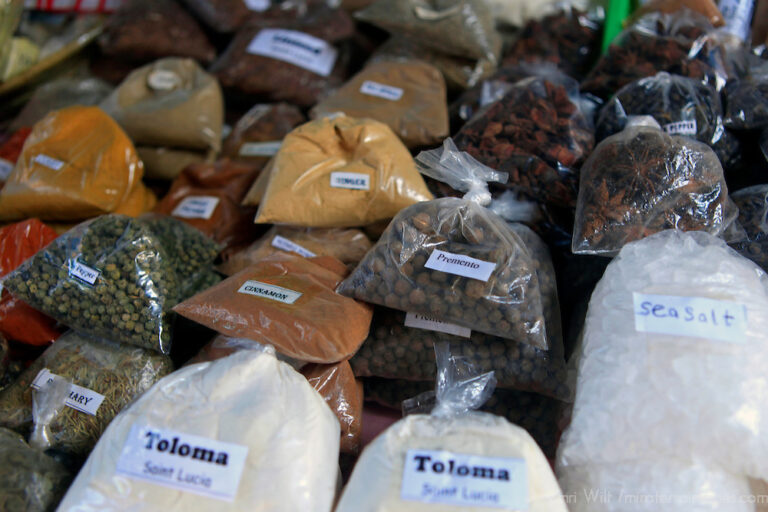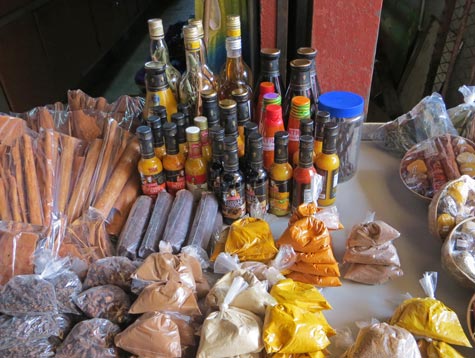Introduction: Discovering Saint Lucian Cuisine
Saint Lucia is a beautiful island nation located in the Eastern Caribbean, known for its stunning beaches, lush tropical forests, and rich cultural traditions. One of the most exciting aspects of Saint Lucian culture is its cuisine, which is a unique blend of African, French, Indian, and Caribbean influences. Saint Lucian cuisine is characterized by its bold flavors, fresh ingredients, and creative use of local spices and herbs.
Influences and Ingredients: The Building Blocks of Saint Lucian Cuisine
Saint Lucian cuisine is heavily influenced by the diverse cultures and traditions that have shaped the island’s history. African slaves brought with them a love of spicy and flavorful dishes, while the French introduced more refined cooking techniques and a love of rich sauces and stews. Indian immigrants brought their love of curry and other spicy dishes, while Caribbean ingredients like plantains, cassava, and yams add a unique twist to traditional recipes.
Some of the key ingredients used in Saint Lucian cuisine include fresh seafood like lobster, conch, and shrimp, as well as local fruits and vegetables like bananas, mangoes, breadfruit, and callaloo. Spices like cinnamon, nutmeg, ginger, and allspice add depth and complexity to dishes, while herbs like thyme, basil, and oregano add freshness and flavor.
Popular Dishes: A Taste of Saint Lucian Flavor
One of the most famous Saint Lucian dishes is the national dish of green fig and saltfish. This hearty breakfast dish features boiled green bananas and salted codfish cooked together with onions, peppers, and spices. Another popular dish is bouyon, a flavorful stew made with meat or fish, root vegetables, and dumplings.
Other must-try dishes include accra, fried codfish fritters; callaloo soup, made with the leafy green callaloo and coconut milk; and grilled seafood like lobster, conch, and shrimp. For dessert, try the sweet and creamy coconut cake or the rich chocolate cake made with local cocoa.
Techniques and Preparation: How Saint Lucian Dishes are Cooked
Saint Lucian cuisine is known for its slow cooking techniques, which allow flavors to develop over time. Stews and soups are often cooked over low heat for hours, while grilled seafood is cooked over charcoal or wood fires for a smoky flavor. Many dishes are also prepared using traditional techniques like pounding and grinding spices by hand.
Desserts and Drinks: Sweet Endings and Refreshing Beverages
Saint Lucian cuisine offers a range of sweet treats and refreshing drinks. Coconut milk is a key ingredient in many desserts, like the creamy coconut cake and the refreshing coconut water ice. Another popular dessert is sweet potato pudding, a dense and sweet treat made with grated sweet potatoes, coconut milk, and local spices.
To wash down your meal, try some local drinks like rum punch, made with local rum, fruit juices, and spices, or mauby, a refreshing and slightly bitter drink made from boiled tree bark. Saint Lucia is also known for its coffee, which is grown on the island and roasted to perfection.
Final Thoughts: Exploring the Diversity of Saint Lucian Cuisine
Saint Lucian cuisine is a fascinating blend of cultures, flavors, and traditions, and offers a unique taste of Caribbean cuisine. Whether you’re a fan of spicy stews, fresh seafood, or sweet treats, there’s something for everyone in Saint Lucia. So next time you’re in the Caribbean, be sure to explore the delicious flavors of Saint Lucian cuisine.










